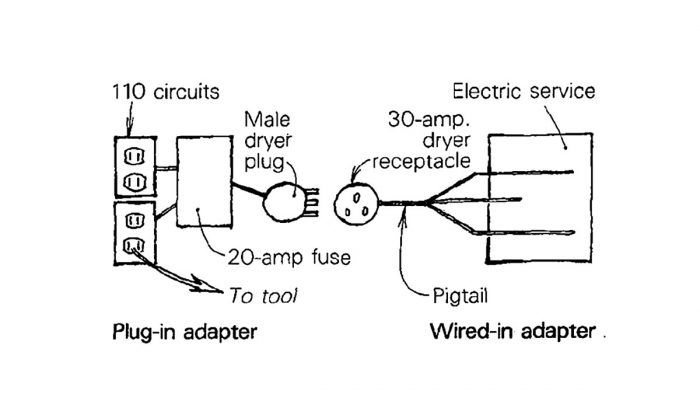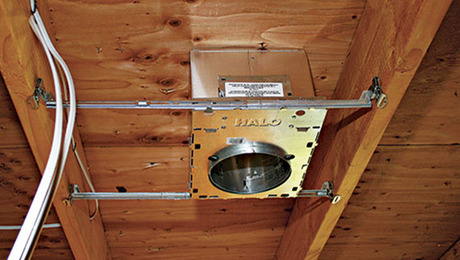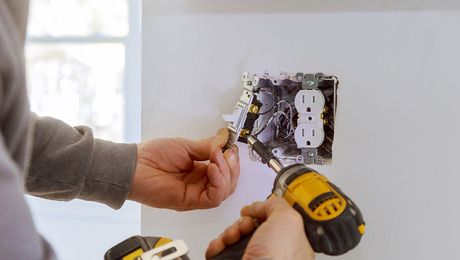
Antiquated wiring can be a real frustration during a remodeling job — under a load, compressors and tablesaws are always blowing fuses. When this happens, I do one of two things. If the house has an electric clothes-dryer, I plug an adapter I made up into the dryer’s 30-amp circuit. The adapter is fused for 20 amps, and it gives us two separate 110-volt circuits.
If there isn’t a dryer, I go to the electric service and tie a pigtail to one of the fused circuits. Our pigtail has a female dryer receptacle on its end that allows us to plug our adapter into it, as shown. If you don’t know your way around a fuse box, have the electrician on your job hook up the pigtail to the electrical service for you. Either way, it’s a lot easier than running back and forth between your work and the service panel to change fuses or throw breakers for the course of a job.
—Angelo Margolis, Sebastopol, CA
Edited and illustrated by Charles Miller
From Fine Homebuilding #17






























View Comments
“[Deleted]”
Some details might have helped make this useful, such as what's inside the box with the 20 amp fuse. I used to wire into old fuse boxes for the same reason, but never thought of making an adapter.
I suppose you cut the end off one one these outlet boxes with the built-in breaker and put a 30amp plug on the end. This even has an 8ft cord. Not sure if they make a 20amp version.
Scubasteve, I learned to make up my own boxes like this back when I was beginning in the trades. I honestly didn't know they had pre-made ones reasonably priced. The ones I make don't have a built in breaker, but I have put a GCFI in some of them. I suspect the reason the one you show is only 15 amps is because they only used a 14g cord. you could build your own with a 12g cord and 20 amp receptacles.
20 volt breakers for your electrical tools? What tools, pray tell. The service box has screw terminals for the ground and neutral wires, but I'm not sure how you "wire in pigtails" to the power bus. Perhaps old fuse boxes are different than breaker boxes.
As a side story, I once had an old home that lost its 0 Volt neutral out on the street somewhere (consequently a low, floating voltage on the neutral). The tenants were getting shocks off the fridge. Utility authority had to come out and fix the problem. I guess the fridge door and handle weren't grounded. It's a good thing that the electrical code now requires a four prong plug with dedicated ground.